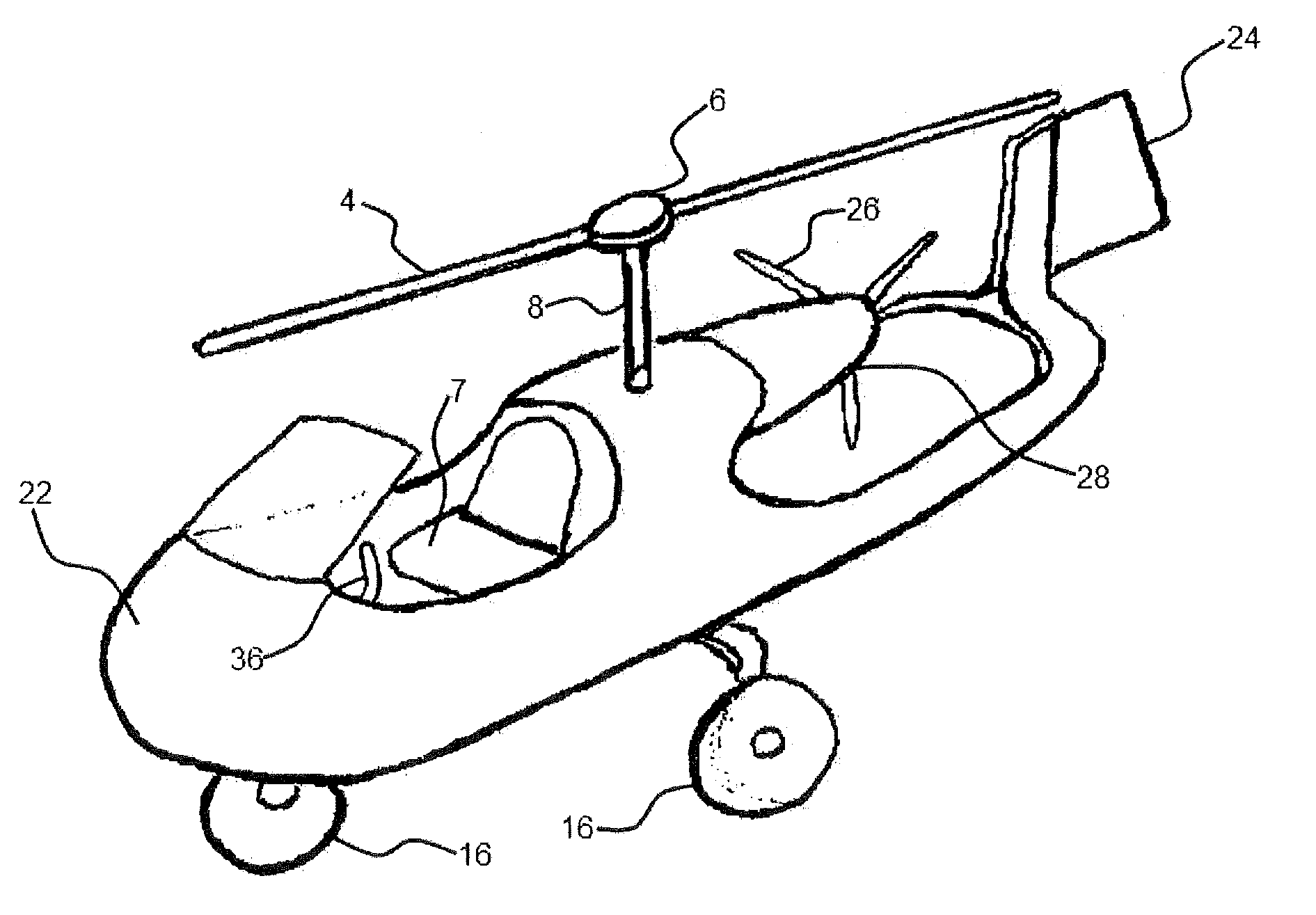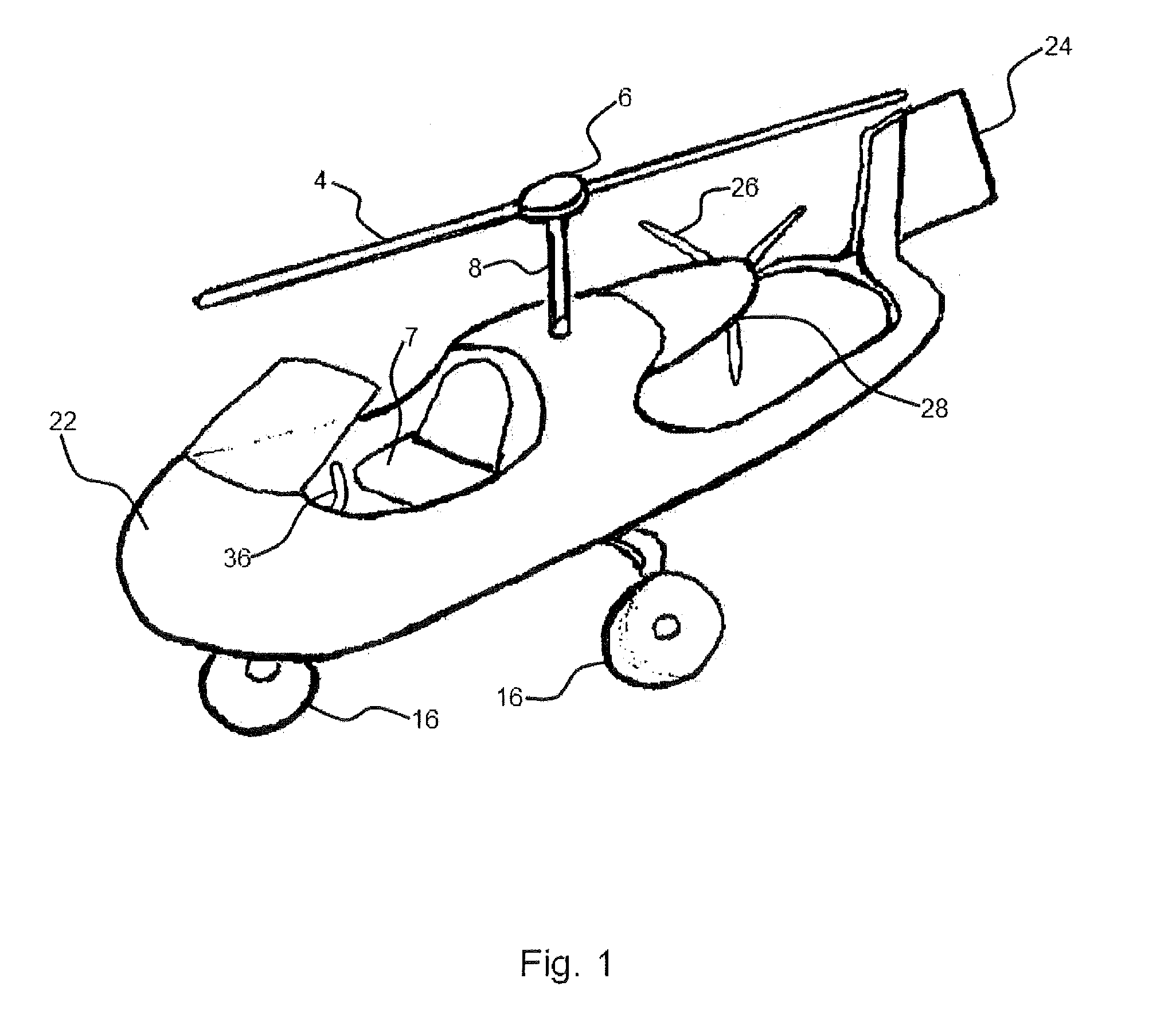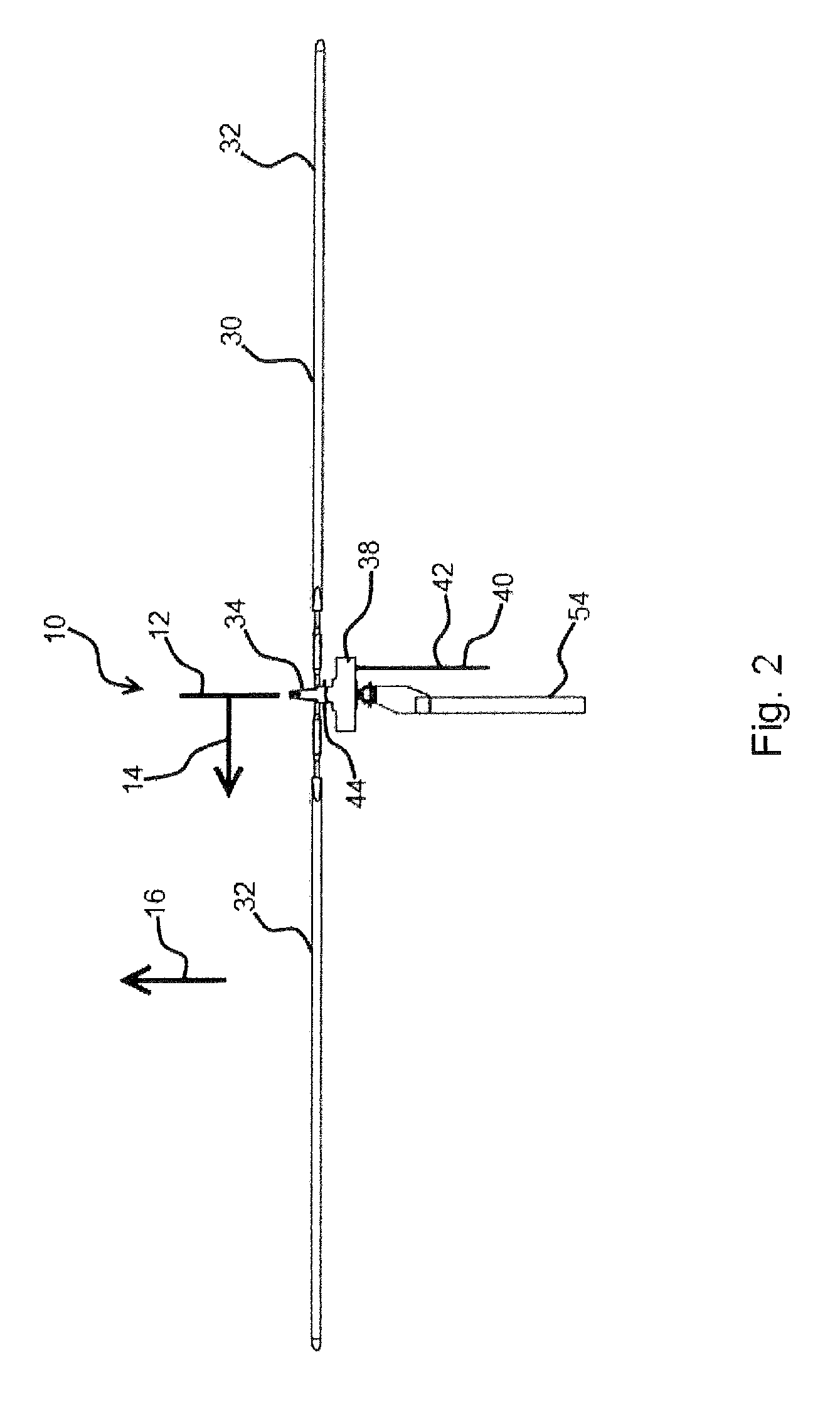Autogyro with pre-rotation
a technology of autogyro and pre-rotation, which is applied in the direction of rotorcraft, vehicles, aircrafts, etc., can solve the problems of inability to take off vertically and hover, inconvenient mechanical pre-spin devices on the market, and inconvenient use of them, so as to optimize the autogyro performance, optimize the takeoff run, and optimize the effect of performan
- Summary
- Abstract
- Description
- Claims
- Application Information
AI Technical Summary
Benefits of technology
Problems solved by technology
Method used
Image
Examples
first embodiment
[0026]The first disclosed embodiment in one form uses a lightweight, low rpm high torque electric motor or motors in line with, and directly or indirectly coupled to the rotating shaft of one or more lift rotors. The lift rotor electric motor is separate from the main propulsion engine, in one form, a standard DC motor is utilized for the lift rotor electric motor. The lift rotor electric motor is powered by on-board battery or by an engine driven generator.
[0027]In function, a user would position the autogyro for takeoff, set the propeller pitch to zero, start the engine and then activate the electric motor to establish pre-rotation of the rotor. Once the rotor has reached the desired rpm, the pilot would activate the interlink which would automatically increase the pitch of the propeller and disconnect power to the rotor as soon as sufficient forward speed to sustain autorotation is achieved. The pilot would most likely be applying full engine power to the thrust propeller. The ex...
second embodiment
[0029]The author's second embodiment, in one form, adds a collective rotor pitch control system to the first version embodiment and may be used in conjunction with the first embodiment.
[0030]As in the first embodiment, the pilot would set the propeller pitch to zero, start the propulsion engine and then activate a switch to energize the electric motor to establish pre-rotation of the rotor. The pitch of the rotor blades would initially be at zero setting, thus producing no lift, and the rotor would be accelerated to a higher than normal flight rpm. When the rotor has reached the desired rpm, the propeller pitch would be increased while applying full engine power and simultaneously switching the rotor blades to normal flight mode pitch just prior to disconnecting power to the rotor motor. The resulting sudden surge of rotor lift produced by the stored kinetic energy at the higher rpm will cause the autogyro to “jump” into the air and continue climbing upon application of full engine ...
PUM
 Login to View More
Login to View More Abstract
Description
Claims
Application Information
 Login to View More
Login to View More - R&D
- Intellectual Property
- Life Sciences
- Materials
- Tech Scout
- Unparalleled Data Quality
- Higher Quality Content
- 60% Fewer Hallucinations
Browse by: Latest US Patents, China's latest patents, Technical Efficacy Thesaurus, Application Domain, Technology Topic, Popular Technical Reports.
© 2025 PatSnap. All rights reserved.Legal|Privacy policy|Modern Slavery Act Transparency Statement|Sitemap|About US| Contact US: help@patsnap.com



